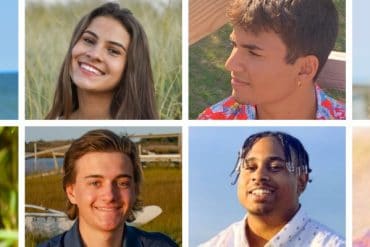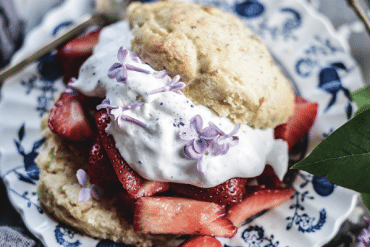The Museum of African American History champions critical chapters in Nantucket’s history.

Most know about the island’s Quaker founders, its whaling fame, its abolitionists and suffragists and its legendary astronomer Maria Mitchell—but what about the long and rich history of African Americans on the island? Years before Frederick Douglass famously delivered his first public address to an integrated audience on the steps of the Atheneum in August 1841, there was already a dynamic African American community on Nantucket that was unlike anything in the United States at that time. Indeed, the island itself emerged as a beacon of equality centuries before the rest of the country. Now, thanks to the Museum of African American History, which is celebrating its second annual Night in White fundraising gala this month, this lesser-known history is gaining a stronger foothold in the community.
“Our mission aims at making certain that the untold stories of African Americans and enslaved persons who were freed or sought freedom are stories that don’t remain untold—and there is an immense amount of those stories on Nantucket,” explained Leon Wilson, the president of the Museum of African American History, whose central offices are based in Boston. “Historically, the citizens of Nantucket have been committed to freedom, not just freedom to some, but freedom to all. We’re talking about a 17th century and 18th century effort that has continued through the 19th, 20th and 21st centuries.”

The earliest records of African Americans on Nantucket stretch back to the 1650s when early Nantucket settlers owned slaves. Although forms of slavery persisted on the island until 1773, a neighborhood known as New Guinea began to emerge in the early 1700s where free African Americans owned homes, had two churches, shops, a school and even a dance hall. At a time when most African Americans across the country were still in bondage, residents of New Guinea operated their own economy. Later known as Newtown, this historic site today centers around the African Meeting House located at Five Corners.
Outside of Newtown, the island as a whole served as a stop on the Underground Railroad for many African Americans fleeing slavery. “The island’s people protected them,” explained Wilson. “There are many stories of slave catchers coming to the island and being immediately removed by Nantucketers who were protecting people of color, hiding them and ensuring that they continued their lives of freedom.” One of the most famous of these stories is of Arthur Cooper and his family who fled to the island in 1820. When an agent sent by the Coopers’ former slave master arrived on Nantucket searching for them, island residents, both in New Guinea and in the broader Quaker community, created an elaborate diversion while the family was rushed into hiding. Now some two hundred years later, the Museum of African American History is in the process of immortalizing this history on the island in the form of a monument to Arthur Cooper.

To emphasize stories like Cooper’s, the Museum of African American History, which acquired the African Meeting House and connected properties in 1999, established the Nantucket Black Heritage Trail. The self-guided tour begins at Nantucket’s historic “Colored” Cemetery where many of the headstones represent icons of Nantucket—and American—history. For instance, there is the grave of Eunice Ross, whose denial to attend Nantucket Public Schools in 1840 ultimately resulted in the first law to guarantee equal access to education in the United States. The gravity of the accomplishment is hard to fathom: a young Black girl living on a remote island sparking landmark racial legislation in the country some twenty years before the start of the Civil War.
Similar feats are found along the nine-stop tour. Walking from the cemetery on 9 Vesper Lane, the next stop is Five Corners, the historic heart of New Guinea. On the corner of York Street is the African Meeting House—one of the longest standing original African American churches in the country— followed by the Seneca Boston-Florence Higginbotham House nearby. After being freed in 1774, Seneca Boston bought the property where he and his Wampanoag wife, Thankful Micah, bore six children. One of their sons, Absalom Boston, became the first African American whaling captain on Nantucket. Boston helmed The Industry with an all-Black crew that returned to the island after a six-month hunt with seventy barrels of whale oil. Thereafter, Boston became a prominent businessman and community leader on the island, even running for local office. In fact, Boston was the driving force behind Eunice Ross being admitted into Nantucket Public Schools. So it was that within a single generation, the Boston family went from being in bondage to being one of the most historic families on the island.

The Museum of African American History is now creating year-round virtual programming as well as expanding its collaboration with Nantucket Public Schools so that, as Wilson explained, “students K through 12 have an early understanding of African American history.” The museum is also engaging the broader year-round population to cultivate conversation, using the African Meeting House as a space to discuss racial equity and social justice. “The conversation is an early start of issues of social equity,” he said. “If you can’t talk about it openly, you’ll never get to talk about solutions. And we bring the history into it. Not much of what we are dealing with today hasn’t been in some way dealt with previously in history.”
Earlier this spring, Wilson and his team held one of these open forums at the African Meeting House where they discussed the unsolved hate crime perpetrated on the historic building’s doors three years earlier. While reemphasizing the museum’s demand for justice in the case, Wilson and those gathered also discussed the relationship between island residents. Looking back to history, Wilson explained that the pursuit of true freedom and emancipation requires all ethnic groups coming together and demanding it. Here on Nantucket, the museum is on a mission to establish the African Meeting House as a venue that can bring the various year-round groups together for discourse that will hopefully lead to a more just and equitable island community.

The Night in White event this July is a driving force behind achieving these objectives on the island and beyond. Once again featuring actor Anthony Anderson as the evening’s emcee, the virtual event will honor fellow actor Hill Harper, who—in addition to his roles on shows like CSI: New York and movies like Limitless—served as the narrator of the museum’s documentary on Juneteenth that was released this summer and debuted at the Dreamland. Produced by Nantucket summer resident AJ Williams, the Night in White gala will have satellite parties at the African Meeting House and elsewhere on the museum’s Nantucket campus. Wilson and his team see the gala as a springboard to their many Nantucket initiatives. “We view Nantucket not just as a completion of the story of African American history, but a completion of the story of the Museum of African American History,” Wilson concluded. “It’s a place for discourse, dialogue and an execution of all initiatives around freedom and racial equity.”
Learn more about the Museum of African American History and ways to contribute to their on-island initiatives at MAAH.org.






